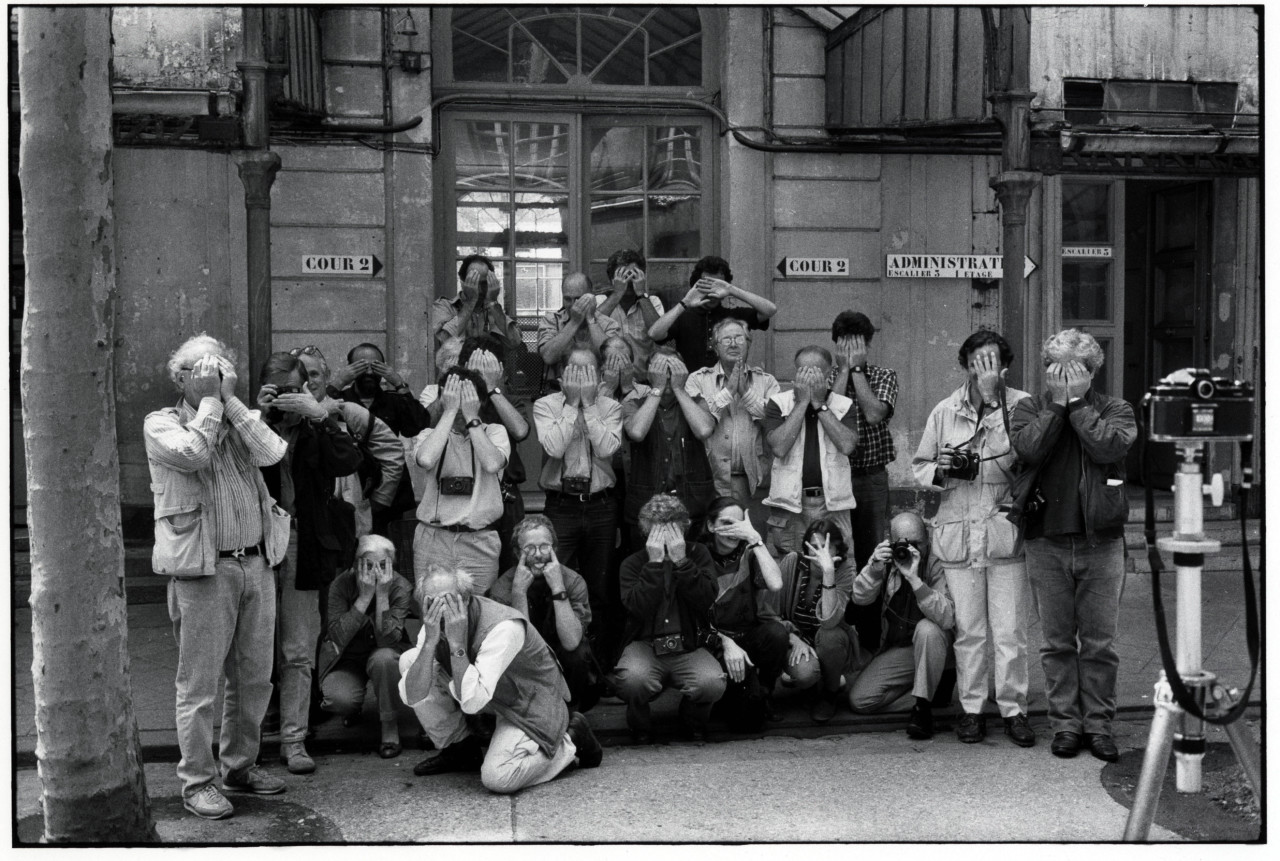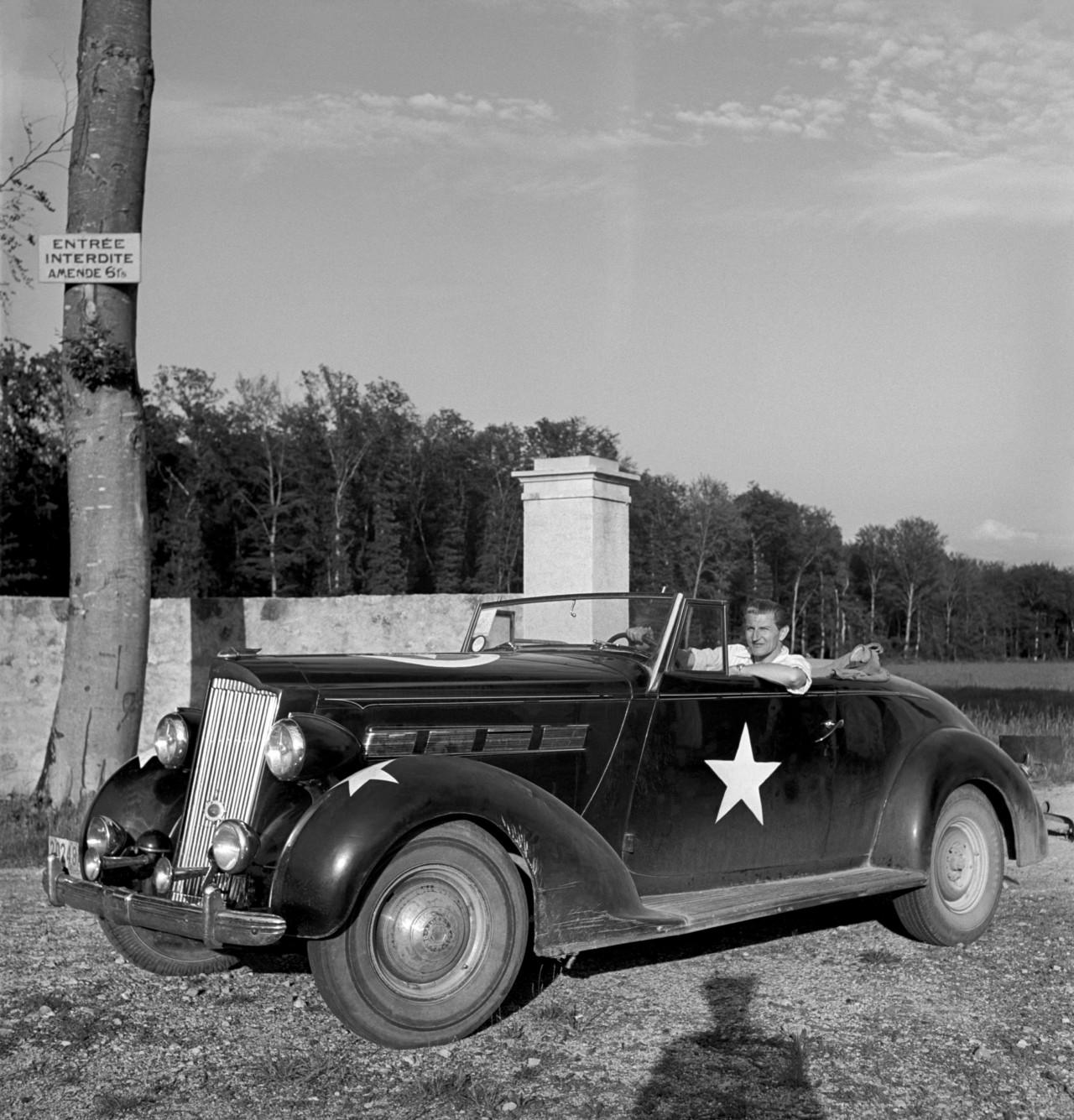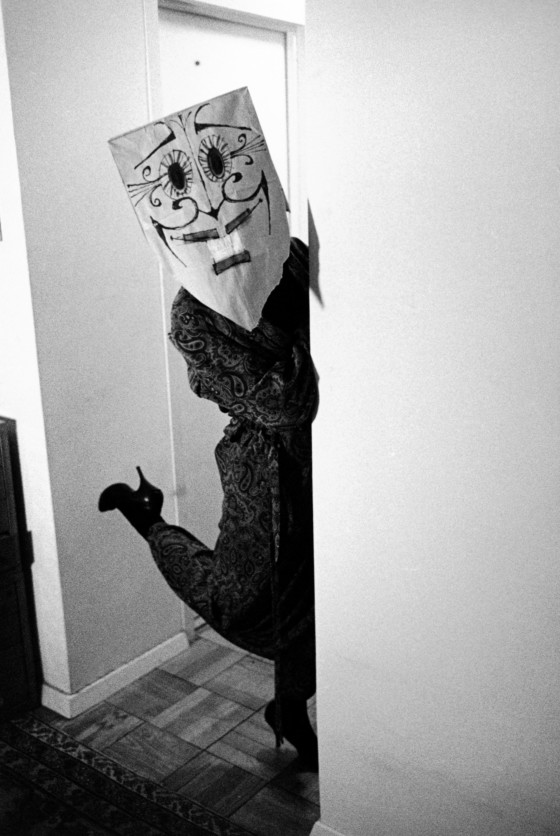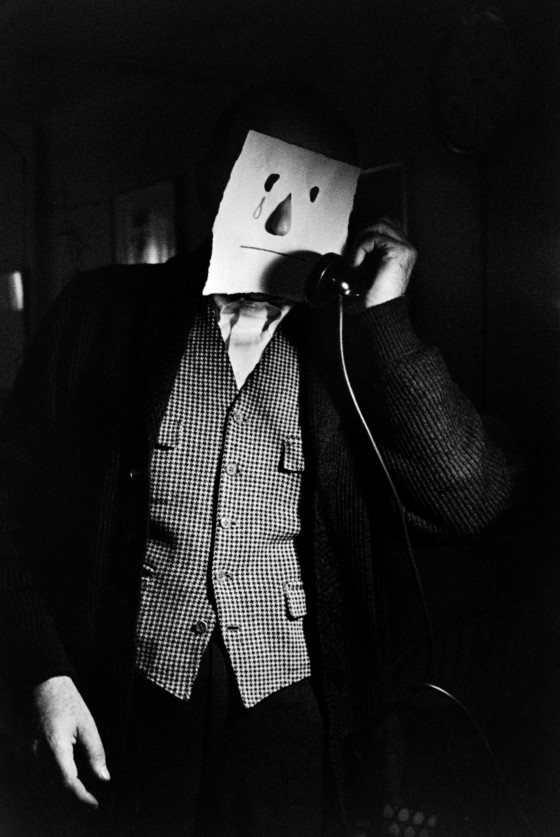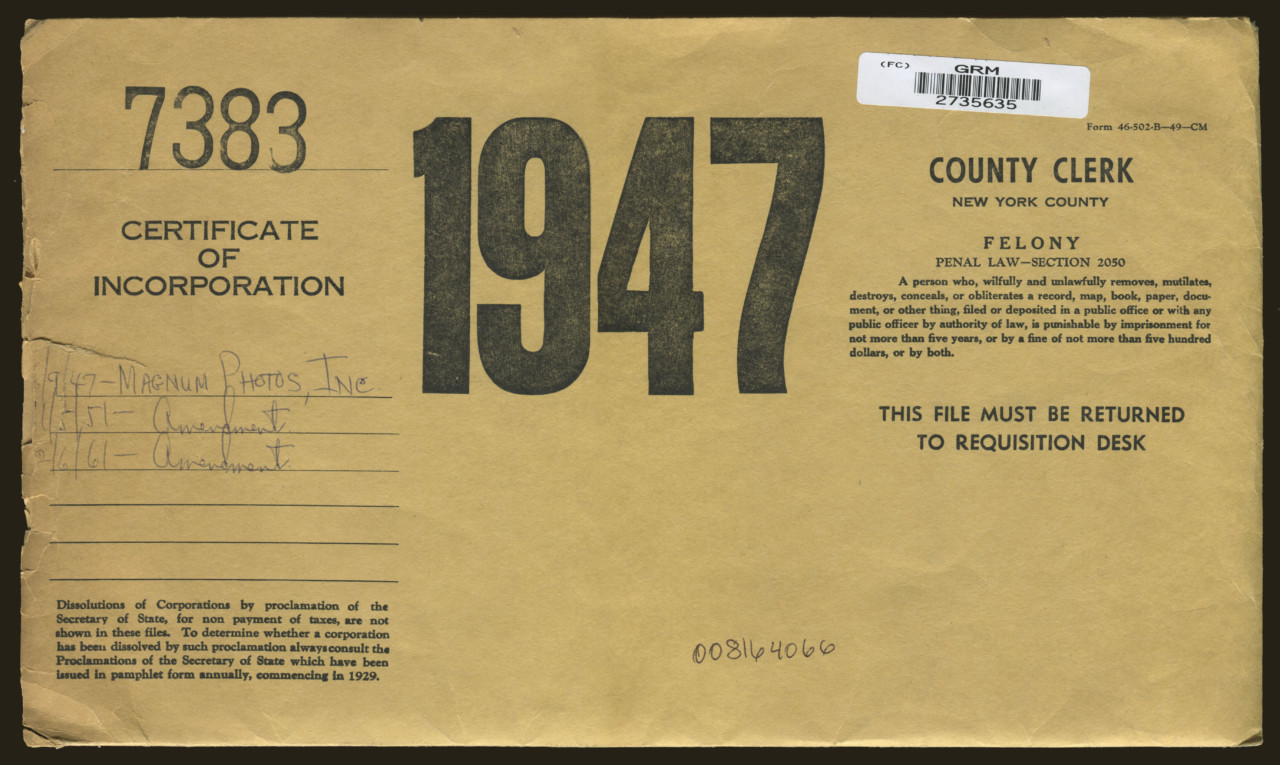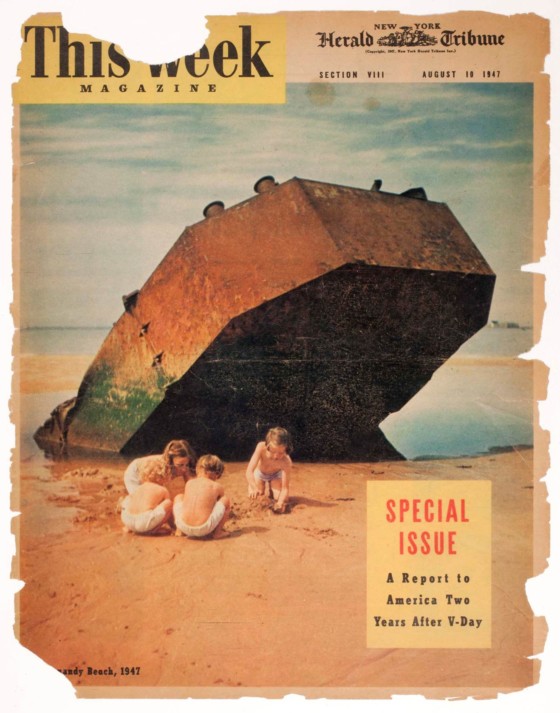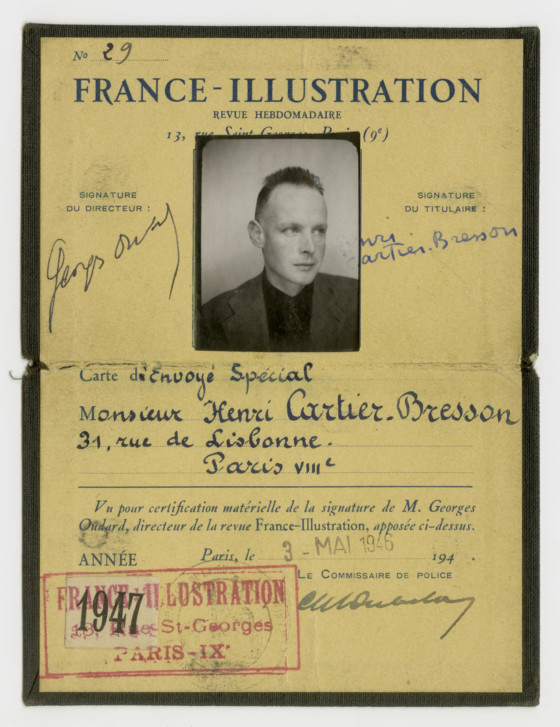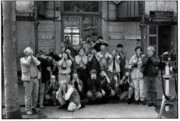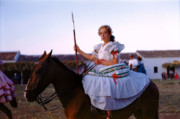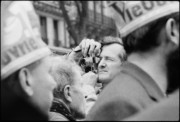The Spirit of Magnum
Excerpts from the new Magnum Manifesto book and ICP exhibition explore the spirit that lies at the heart of the agency
A new book, by author and curator Clément Chéroux, together with Clara Bouveresse, explores the history of Magnum, through key historical events, and issues and developments in the photography industry, alongside the seminal Magnum photographs that have defined the agency. The curated tome demonstrates how Magnum Photos owes its pre-eminence to the ability of its photographers to encompass and navigate the points between photography as art object and photography as documentary evidence. A Magnum photograph can be expressive and bear witness at the same time.
Unearthed correspondence, notes and other writing between Magnum photographers over the years reveal the inner workings and heated debates at the heart of the agency. Inge Morath’s writing for 1981 exhibition Paris/Magnum spoke of a “communal warmth” of the agency, and painted the following portrait of the agency’s first years.
“Capa was the boss because, for one thing, he kept on the lookout for stories for all the Magnum photographers. But equally vital were his experience, generosity, connections, aggressiveness, and the vision he had for Magnum, which kept us going. Since few of us were married, we had much time to spend together. We talked a lot, but rarely about photography. Our discussions were more often about politics or philosophy or racehorses, pretty girls, and money. We constantly looked at each other’s work, and criticism could be tough if the work did not measure up to the expected standard.”
“On May 25, 1954, Robert Capa was killed by a land mine in Vietnam. It was a stunning blow. Nobody wanted to believe it. Two days later a telegram reached us with the news that Werner Bischof had died in a car accident in the Peruvian Andes on May 16. The terrible sense of loss drew us closer together. Chim took over the presidency and Cornell Capa joined Magnum. Two years later, in the summer of 1956, gentle Chim was shot and killed in the Suez crisis.
We will never forget these three. They brought us together. Their totally different temperaments and ways of seeing and photographing expressed early on the variety of visions and the seriousness of work that has over the years been the distinction of Magnum. That they also loved to play and that they treasured friendship provided a communal warmth not usually found in photo agencies. To have chosen Paris as the place to begin it all was another stroke of genius of that wonderful mad Hungarian Capa, who talked Chim, Cartier-Bresson, and the others into working together in a cooperative named for a big bottle of champagne.”*1
"Their totally different temperaments and ways of seeing and photographing expressed early on the variety of visions and the seriousness of work that has over the years been the distinction of Magnum"
- Inge Morath
The co-operative spirit of Magnum is also at the heart of writing by Erich Hartmann in 1984, in which he defined some of the basic principles of Magnum.
“– self-effacement, the belief that the welfare of the group contains one’s own welfare, even in the face of possible inequities, financial and/or otherwise, of contributions made versus services given.
– there must be a strong and long-time commitment to a common purpose. Cooperatives come and go in photography – they are often established in flattering imitation of Magnum without really knowing how Magnum works. Sooner or later they flounder and disappear because the willingness to work together – in part at least for the sake of working together – is a difficult concept to carry out in the face of the egomania that is needed to be a good and interesting photographer in the first place.”
"There must be a strong and long-time commitment to a common purpose"
- Erich Hartmann
“Even before establishing the cooperative, thought must be given to ‘the children’: whether the cooperative is to be a Tontine of some kind (and there is reason to suspect that this was the original idea of Magnum), or whether it is to search for and accept and raise – and finally give control to – ‘children’ who, like all children, may have a family relationship but who will, if trained well, insist on going their own way. Once more, the problem of egomania. Magnum, for instance, is now run entirely by ‘children’ and ‘grandchildren’ and it is manifestly not the Magnum of the founders or, indeed, of my somewhat later generation. There is much grumbling and there is some faltering and there is the possibility (which Magnum is facing just now, and not for the first time) that, in order to survive, it must change so much that it will no longer be the organization geared to accomplish in the future what it accomplished in the past. As the general said after the Tet offensive, “in order to save Hue we have to destroy it.” *2
These excerpts are from Magnum Manifesto, published by Thames & Hudson. A note from the publisher:
Magnum Manifesto is the landmark book celebrating the 70th anniversary of the world’s greatest photographic agency, Magnum Photos. Offering a fresh and insightful view of the agency’s history and archive, it takes an analytical look at the work of Magnum’s photographers, and provides an understanding of what it is that makes Magnum Photos so different, so special and so great.
Magnum Photos members can enjoy 20% off the book at thamesandhudson.com. Simply enter the code MAGNUM20 when reviewing your order.* Offer ends 31 July 2017. *Offer not valid in conjunction with any other promotional offer.
*1 Inge Morath, Introduction, Paris/Magnum: Photographs, 1935–1981, Aperture/Magnum, New York/Paris, 1981, pp. 6–1
*2 Erich Hartmann, ‘Elements of the Magnum Co-operative’, February 1984, Magnum Foundation, New York.


